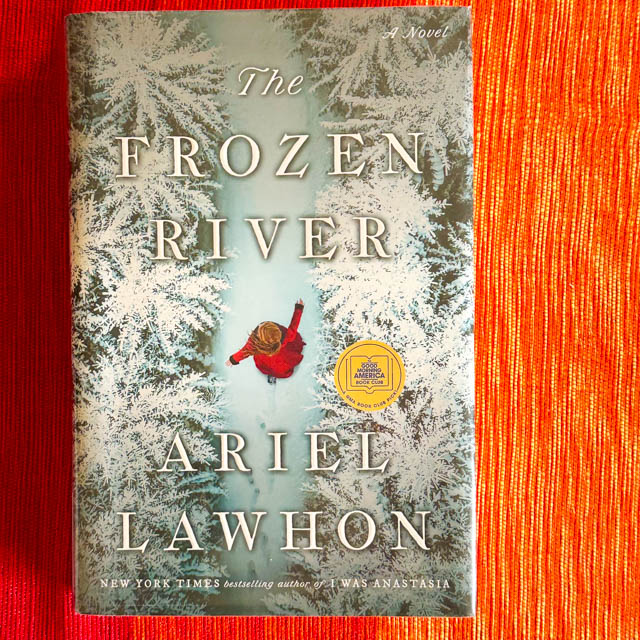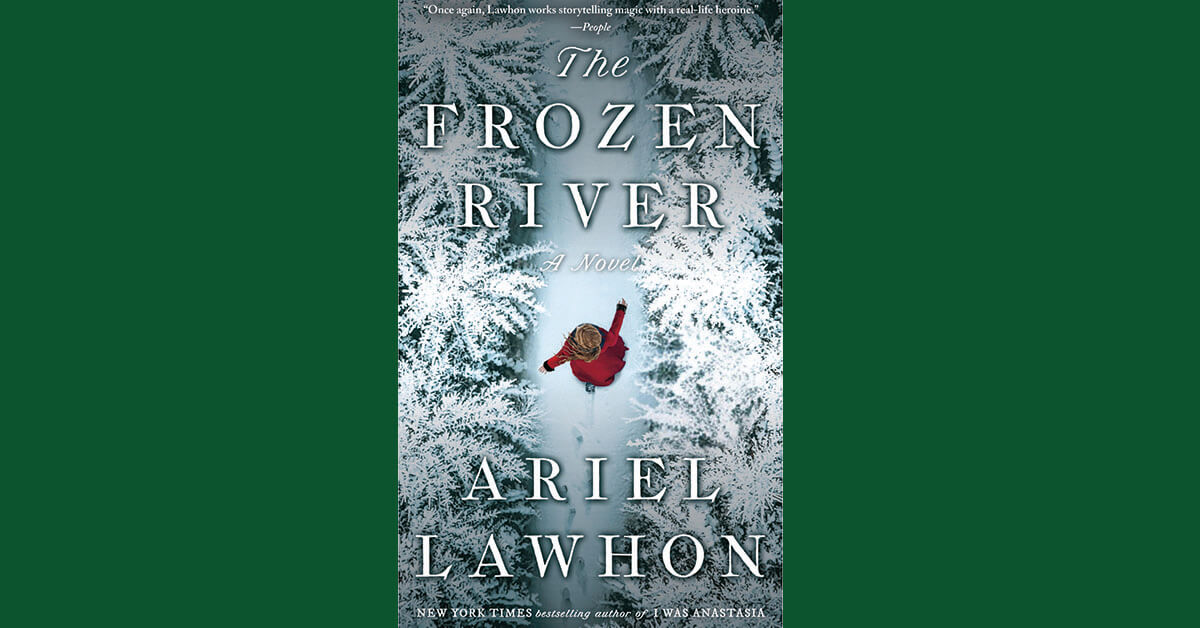*The Frozen River Book*: A Deep Dive into Ariel Lawhon's Historical Mystery

Ariel Lawhon’s The Frozen River is a captivating historical fiction novel that seamlessly blends fact and fiction, drawing inspiration from the real-life diaries of Martha Ballard, a remarkable 18th-century midwife. This meticulously researched work offers a gripping murder mystery while simultaneously providing a poignant exploration of women’s lives and societal expectations in 1789 Maine. The novel’s success lies in its ability to engage readers on multiple levels, making it a compelling read for lovers of historical fiction, mystery, and stories of female empowerment. This in-depth analysis will explore The Frozen River through the lenses of several key areas: the book’s genre and literary merit, its central character Martha Ballard and her historical context, the themes of justice and societal inequalities the novel explores, the book’s reception and cultural impact, and its potential use in educational settings.

Genre and Literary Merit: A Historical Mystery at its Finest
The Frozen River defies easy categorization, skillfully weaving together elements of several genres. While primarily classified as historical fiction, its strong narrative arc, compelling mystery, and suspenseful pacing firmly place it within the realm of historical mystery. The novel expertly balances its historical setting and factual foundation with a well-crafted narrative that keeps readers enthralled. Lawhon’s detailed descriptions of 18th-century life in Hallowell, Maine, contribute to the immersive atmosphere, creating a strong sense of place that transports readers back in time. The vivid imagery and authentic portrayal of the harsh winter setting heighten the suspense.

The narrative structure of The Frozen River cleverly employs Martha Ballard’s diary entries as a key component of the story. These diary excerpts, interspersed throughout the narrative, not only provide historical context but also add layers of authenticity and depth to the character of Martha. They add a dimension of reality to the story, illustrating the blend of personal experiences and practical observations that constituted Martha’s life. They are more than just historical record; they become a tool within the narrative itself and key evidence in the mystery’s resolution.
The murder mystery at the heart of the novel is skillfully plotted, maintaining a consistent level of tension and intrigue. The mystery unfolds gradually, revealing clues and red herrings at just the right moments. It never feels rushed, allowing readers to savor the details and connect with the characters. The slow burn of the mystery is a deliberate choice, not simply a flaw in pacing, enhancing the atmosphere of dread that pervades the harsh Maine winter. The complexity of the plot creates an engaging intellectual puzzle for the reader, encouraging both active participation and critical thinking. This creates a more satisfying outcome and enhances the story’s appeal.

Furthermore, the novel is praised for its beautiful prose and evocative writing style. Lawhon’s ability to convey both the physical details of 18th-century life and the emotional experiences of her characters is exceptional, drawing readers into the story and making them feel personally connected to both Martha’s journey and the challenges faced by women in that time. This masterful use of language enhances the overall reading experience, making The Frozen River a truly memorable and impactful work of literature.
Martha Ballard: A Historical Context and Character Study
The Frozen River is unique in its use of a real historical figure as its central character. Martha Ballard (1735-1812) was a remarkably successful and well-documented midwife in Hallowell, Maine, whose meticulous diaries provide a rich source of information about 18th-century life. Lawhon’s novel is inspired by these diaries, fictionalizing aspects of Ballard’s life while maintaining a respect for the historical reality of her existence. The author carefully intertwines documented facts with imagined events to create a compelling and largely believable narrative. This approach allows the reader to engage with a historical period in a way that’s both entertaining and instructive.
The novel’s portrayal of Martha Ballard is multi-faceted. She is depicted as a strong-willed, intelligent, and compassionate woman who defied the limitations imposed on women during her time. Her literacy and her keen observation skills, rare for women of that era, enable her to become a central figure in the murder investigation, and her experiences as a midwife give her unique insights into the lives and circumstances of the town’s inhabitants, enhancing her capacity as both investigator and witness. She’s also shown as a loving wife and mother, highlighting the balance between personal and professional commitments. This complexity helps the reader understand that she is a real person with layers and motivations that extend beyond the main plot.
This biographical approach not only enriches the narrative but also highlights the often overlooked contributions of women to history. The novel’s detailed descriptions of Martha’s medical practices and daily life provide a window into a world often unseen in historical records, creating a well-rounded portrayal of a dynamic woman thriving amidst the constraints and expectations of 18th-century society. This allows the author to bring a forgotten historical figure to life, showcasing her accomplishments and struggles in a way that’s both enlightening and compelling.
Themes of Justice and Societal Inequality: A Modern Resonance
The Frozen River transcends its historical setting to grapple with timeless themes of justice, inequality, and the power of individual voices. The novel’s narrative arc revolves around a central mystery, but more importantly, it is about Martha’s persistent pursuit of justice within a male-dominated society that actively obstructs and undermines her attempts to uncover the truth.
The novel vividly portrays the significant societal inequalities faced by women in 18th-century America. Women’s legal rights were extremely limited; women lacked the autonomy to testify in court without a male guardian present and were frequently punished for sexual transgressions that men faced no consequences for. The narrative skillfully highlights these injustices through the various female characters’ experiences, creating a powerful depiction of the power imbalance between men and women and its consequences. These observations create a timeless story that still resonates with modern readers who encounter similar struggles.
Martha’s determination to seek justice for the women in her community forms the core of the narrative’s emotional weight. She uses her skills, her wit, and her courage to overcome the limitations imposed by society, demonstrating her profound commitment to fairness. Her own diary and her unique perspective as a midwife give her access to information and influence that others lack. This creates a strong connection between the historical setting and modern-day concerns about justice for women and marginalized groups.
This powerful undercurrent of social commentary adds to the book’s overall impact, raising crucial questions about gender inequality and the long struggle for justice. By providing a window into the past, The Frozen River encourages readers to consider the ongoing relevance of these issues within contemporary society.
Reception and Cultural Impact: A Critically Acclaimed Success
The Frozen River has received considerable critical acclaim since its publication. It has been praised not only for its storytelling but also for its historical accuracy and its powerful portrayal of women during a tumultuous period. The novel’s selection as a Good Morning America book club pick and an NPR book of the year speaks to its widespread appeal and its ability to connect with a broad readership.
The positive reviews frequently highlight the book’s engaging plot, its richly drawn characters, and its atmospheric writing style. Many reviewers also emphasize the novel’s feminist themes and its relevance to contemporary concerns about gender equality. The book’s success demonstrates that historical fiction can be both commercially viable and intellectually stimulating. The novel’s critical success has also served to elevate Martha Ballard’s story from obscurity, making her a recognizable figure. This speaks to the book’s impact on the broader public understanding of women’s contributions to history and their struggles against inequality.
The novel’s popularity also indicates a growing interest in historical mysteries featuring strong female protagonists. The Frozen River has been compared to other successful novels in similar genres, such as Outlander and Where the Crawdads Sing, suggesting that the story’s themes and narrative structure appeal to a broad audience seeking immersive historical fiction with an element of mystery and intrigue. The impact of the book has transcended mere literary circles and helped to promote conversations surrounding historical figures and social injustice.
Educational Value and Applications: A Tool for Learning and Discussion
Beyond its literary merit and popular appeal, The Frozen River holds significant educational value. Its historical accuracy, coupled with its engaging narrative, provides a unique opportunity for readers to learn about 18th-century American life, specifically the experiences of women in that era. The novel can be used in classrooms and educational settings to supplement historical instruction, offering students an immersive and relatable approach to understanding a period often presented in a more detached and academic manner. The book offers a powerful lesson on the challenges and sacrifices experienced by women during this time, as well as celebrating their resilience, determination, and strength.
The Frozen River is also suitable for use in discussions around several themes. The novel’s exploration of gender inequality, justice, and the importance of individual voices can spark debate and critical thinking among students. This can be used as a foundation for discussing similar issues in contemporary society and the lasting implications of historical events. The characters in the book, each having their own struggles, offer opportunities for deeper discussions.
The blend of fiction and factual background provides an opportunity to engage with historical materials in a lively way. Students can investigate further into Martha Ballard’s life and her role as a midwife, deepening their understanding of the historical context that underlies the novel. The text encourages further exploration into the history of women’s rights and gender inequality, helping students engage in critical analysis of both the past and present. Furthermore, the novel’s murder mystery provides opportunities for analytical thought and the ability to evaluate conflicting evidence.
In conclusion, The Frozen River is a multi-layered and deeply engaging novel that successfully combines historical fiction, mystery, and social commentary to create a truly compelling narrative. Its carefully constructed plot, richly developed characters, atmospheric writing style, and exploration of timeless themes of justice and societal inequality has resulted in wide-spread critical acclaim and established the novel as a significant achievement in contemporary historical fiction. Furthermore, its high literary merit, historical accuracy, and engagement of socially relevant topics ensure its longevity and utility as a tool for education, discussion, and promoting historical appreciation.